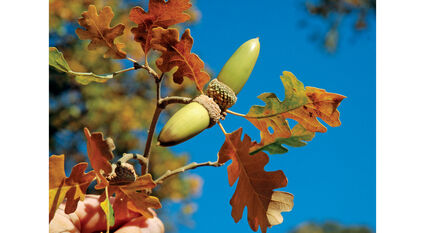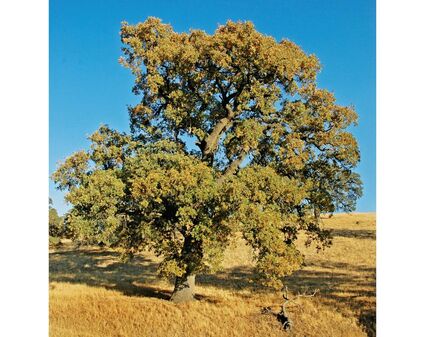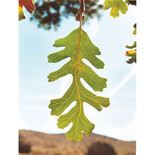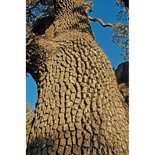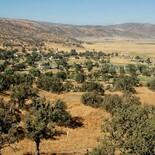Valley Oak: the Bison of our mountains
January 21, 2023
The Tehachapi Mountains are home to at least six species of tree oaks and perhaps that many shrubs oaks as well. Oaks are one of the defining characteristics of many local landscapes. The biggest of these are Valley Oaks, which can grow into massive, living sculptures with pale, deeply furrowed bark, a rugged framework of craggy, angular limbs and a spreading canopy of green lobed leaves.
The fate of our largest native oak trees, the Valley Oaks (Quercus lobata), can be compared to that of the Buffalo, or American Bison, and here's why: when settlers first came to the Great Plains, they found it populated with huge numbers of a magnificent, productive animal that was supremely adapted to life on the prairie.
So the newcomers busily set about annihilating this well-suited native, and replacing the hardy Bison with introduced cattle, which had a much harder time surviving the challenging conditions.
Likewise, those who settled California found the valleys populated with enormous, drought-tolerant Valley Oaks that spread their cooling shade, and the outsiders quickly set about cutting down the Valley Oaks and replacing them with farmland at first. Later much of this cultivated ground became housing developments, typically planted to birch trees, maples and other non-natives that often struggle to survive.
Just as there has been a successful effort in recent decades to bring back the mighty American Bison, so too has there been a growing movement to plant Valley Oaks in California -- to return more of these splendid, resilient hardwood trees to the landscapes they long dominated.
The Tehachapi Mountains have done better than many other parts of California when it comes to retaining intact Valley Oak savannahs, particularly in some of the outlying areas like Bear Valley Springs, Stallion Springs and Golden Hills. But there are certainly fewer of these iconic trees here than there once were.
Much of the Tehachapi Valley floor was once covered by Valley Oaks, and oldtimer Brick Jones told me that his father said "You could ride from Monolith to the Hill Ranch (now Stallion Springs) without leaving the shade of an oak tree."
That statement is somewhat exaggerated, of course, but it is an accurate description of past conditions: there used to be a near-continuous spread of oak savannahs and woodlands in the valleys of Tehachapi.
On the more level ground, these trees were often cleared to make farming easier, and their dense, beautiful wood was seldom milled and used for building anything, but instead was simply sawed up into short pieces, split and burned in fireplaces and stoves. It seems like madness to me now, but that's what happened.
There is a single, original native oak that predates the town left within the City of Tehachapi – it is a healthy Blue Oak, at least two hundred years old, which grows on I Street on property owned by the Ursua family.
Happily, Quercus lobata trees are easy to find at local nurseries, or to grow your own from acorns, and they still thrive here, with deep roots and a lifespan that dwarfs our own. They are a great choice to plant in most locations. If you grow Valley Oaks in appropriate places on your land, your property value will increase as the trees grow steadily bigger and stronger.
Valley Oaks are truly beautiful and majestic trees, offering shade in the summer and then losing their distinctive leaves to provide sunlight in the winter when you want it. And Valley Oaks can grow much faster than people think, when given a little care and occasional deep watering.
In more recent years, both private citizens and governmental agencies have planted hundreds of Valley Oaks locally, including within the city limits, so Valley Oaks are not just part of our past, they are a big and growing part of our future as well.
Keep enjoying the beauty of life in the Tehachapi Mountains.
Jon Hammond is a fourth generation Kern County resident who has photographed and written about the Tehachapi Mountains for 38 years. He lives on a farm his family started in 1921, and is a speaker of Nuwä, the Tehachapi Indian language. He can be reached at tehachapimtnlover@gmail.com.


